10 Modern art display ideas
Displaying modern art is not just about hanging pieces on a wall; it’s about creating a statement that reflects your personality and enhances your living space. The right display can transform an ordinary room into an inspiring environment. Whether you live in a minimalist apartment, a classic home, or an industrial loft, modern art can become the visual anchor of your design. Below are ten carefully curated ideas for showcasing art in innovative, elegant, and balanced ways that elevate your home’s aesthetic appeal.
1. The Statement Wall Gallery
A statement wall gallery allows you to create a bold visual narrative using multiple pieces of art. Instead of spreading artwork across different walls, dedicate one full wall to your collection. This approach works beautifully in living rooms, hallways, or staircases.
Preparation and Use:
Start by selecting a central wall with good lighting. Choose pieces that share a theme, color palette, or artistic tone. Arrange them symmetrically for structure or asymmetrically for a contemporary feel. Use matching frames for a cohesive look or mix materials like wood, metal, and acrylic for contrast. Before drilling holes, plan your arrangement using paper templates to visualize spacing. Incorporate lighting from above or below to highlight each piece. The result is an engaging visual feature that turns one wall into a curated gallery, blending personality and sophistication while maintaining a cohesive modern style.
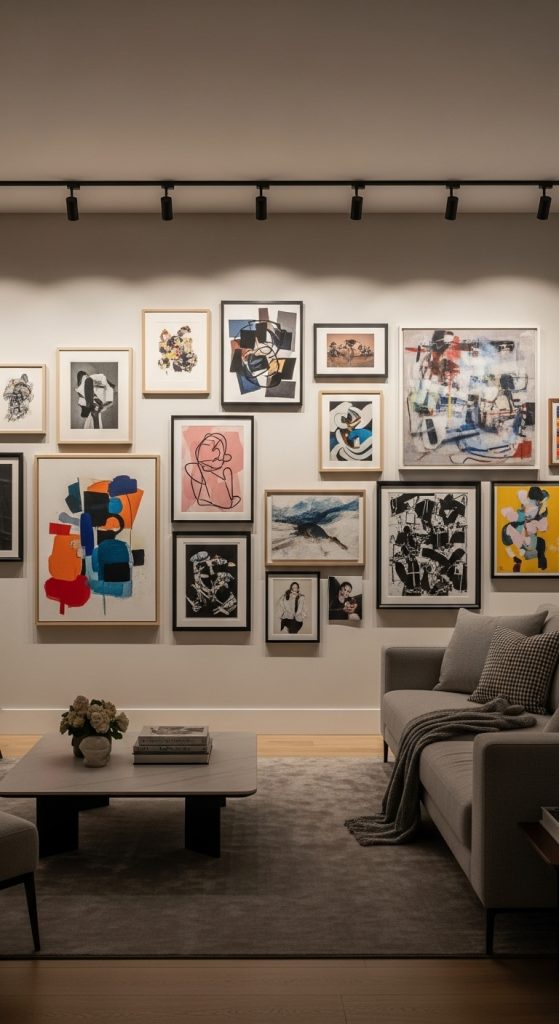
2. Floating Shelves and Layered Display
Floating shelves are a versatile and modern solution for displaying art in an adaptable format. Instead of committing to fixed wall arrangements, shelves allow you to switch artwork seasonally or as your collection grows.
Preparation and Use:
Choose floating shelves that match your interior style—natural wood for Scandinavian spaces, metal for industrial looks, or sleek white shelves for minimalist homes. Mount them securely at eye level or create vertical stacks for visual interest. Combine framed art, sculptures, and small plants to introduce texture and variety. Layer pieces by overlapping smaller frames in front of larger ones for a relaxed, curated aesthetic. Keep spacing consistent to maintain balance. Use this display method in hallways, offices, or living rooms to bring flexibility and modern depth to your walls. The floating shelf technique encourages creativity and makes art feel approachable while maintaining a clean, modern look.
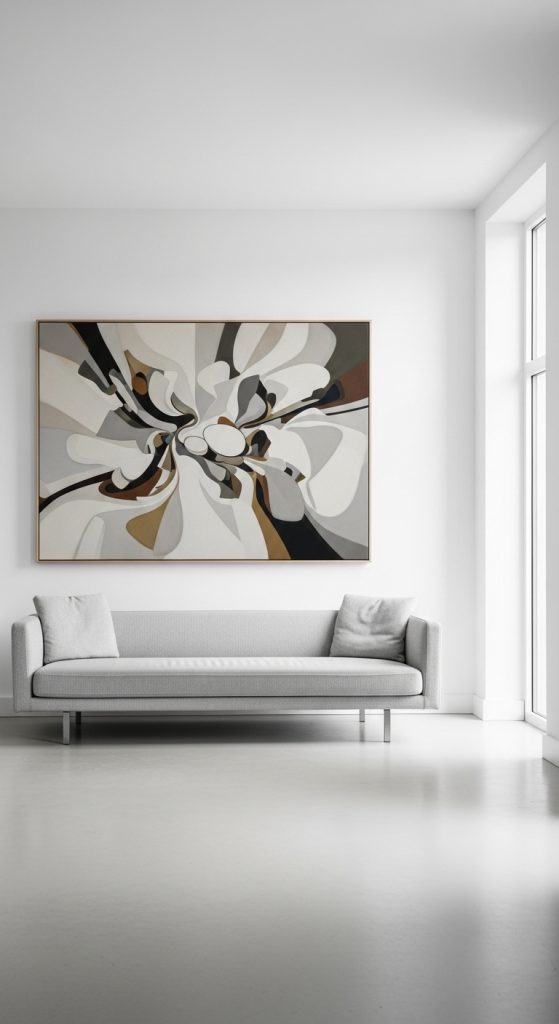
3. Oversized Single Artwork as a Focal Point
Sometimes, a single large piece of modern art makes a more powerful statement than a collection. An oversized canvas or sculpture immediately commands attention and can define the mood of an entire space.
Preparation and Use:
Begin by selecting a piece that resonates with your style and complements your room’s color palette. Large abstract paintings, photographic prints, or metal wall sculptures work beautifully. Place the artwork on a neutral wall to let it stand out. Ensure the piece is centered and aligned at eye level for maximum visual impact. Use ambient lighting or a dedicated spotlight to enhance the artwork’s texture and color. Complement it with minimalist furniture to keep the focus on the art itself. This approach works especially well in open-concept spaces or above fireplaces, beds, or sofas. The simplicity of one dominant artwork gives your home a museum-quality aesthetic without overwhelming the space.
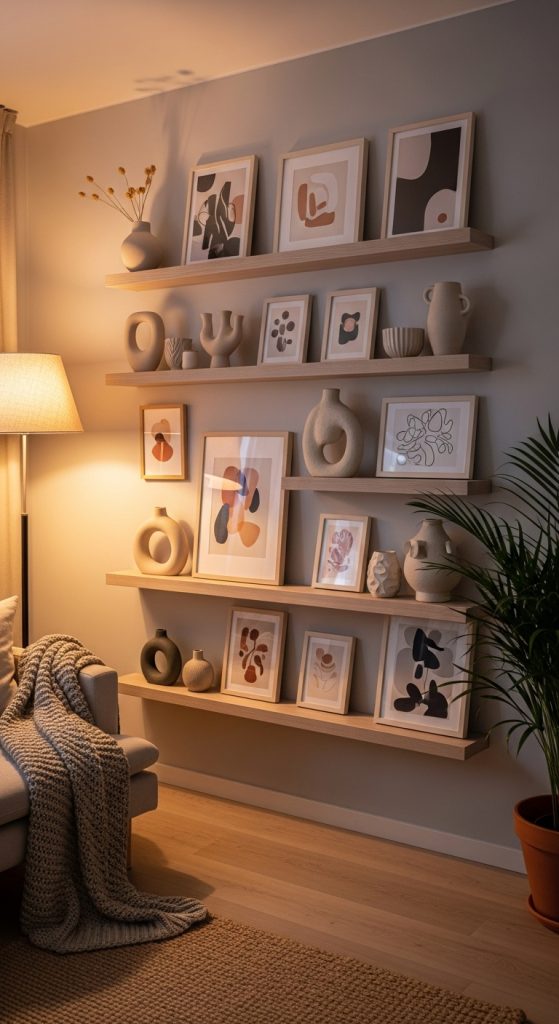
4. Grid and Symmetrical Arrangements
A grid display creates a sense of order and precision, ideal for showcasing multiple pieces of similar size or style. This structured approach gives your wall a contemporary and polished feel while maintaining balance and harmony.
Preparation and Use:
Select artworks with a consistent theme, such as black-and-white photography or minimalist abstracts. Use identical frames for a unified aesthetic. Measure your wall carefully to maintain equal spacing between frames—typically two to three inches apart. Align all frames perfectly using a level and measuring tape. This layout works beautifully in dining areas, office spaces, or modern hallways. Keep surrounding decor minimal to prevent visual clutter. Grid arrangements bring symmetry and control, highlighting the geometry of your artwork. It’s a perfect method for people who appreciate precision and want their art to reflect order, structure, and a refined sense of style.
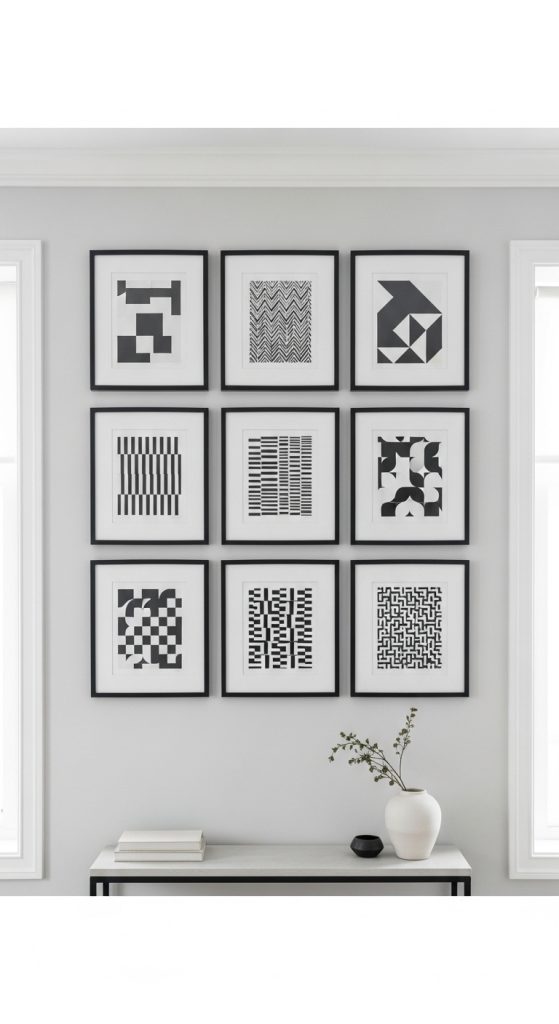
5. Leaning Art for a Relaxed Contemporary Look
Leaning art displays create a casual yet sophisticated atmosphere that suits modern interiors. Instead of mounting art permanently, you can rest pieces against the wall, allowing for flexibility and layering.
Preparation and Use:
Choose a large piece to lean against a wall on the floor, sideboard, or console table. Pair it with smaller frames in front for depth. This technique works best with bold modern prints or abstract canvases. Keep the surrounding area clutter-free to highlight the art’s relaxed presence. Place leaning art in entryways, behind sofas, or in bedrooms for a refined yet effortless effect. For safety, use non-slip pads or brackets to prevent slipping. You can mix framed art with sculptures or ceramics to add texture. Leaning art gives you the freedom to rearrange displays easily, creating a dynamic and evolving aesthetic that feels intentional and curated.
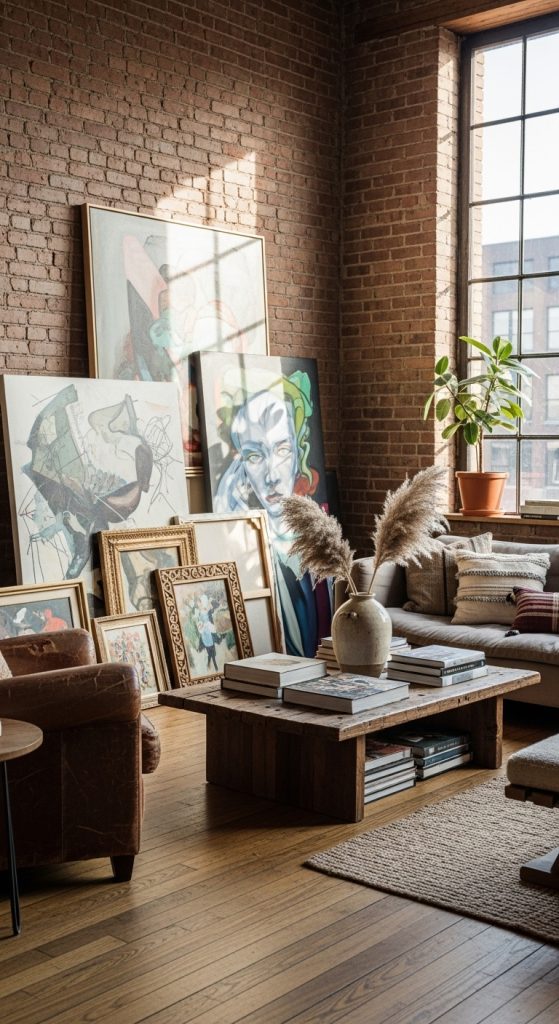
6. Incorporating Sculptures and 3D Art
Modern art extends beyond flat canvases—sculptures, ceramics, and 3D installations add depth and tactile interest. Displaying these pieces thoughtfully brings dimension and sophistication to contemporary interiors.
Preparation and Use:
Choose a dedicated surface like a pedestal, floating shelf, or console to display your sculpture. Consider scale—larger pieces can stand alone while smaller ones work well in clusters. Use directional lighting to enhance texture and shadow. For a cohesive display, match the material of your sculpture to surrounding elements such as wood, stone, or metal. Integrate glass domes or minimalist bases to create contrast between textures. 3D art can also be mounted directly on walls using discreet supports. Place sculptures strategically in corners, near staircases, or as centerpieces on dining tables. This approach transforms the art from decoration into an immersive experience that engages both sight and touch.
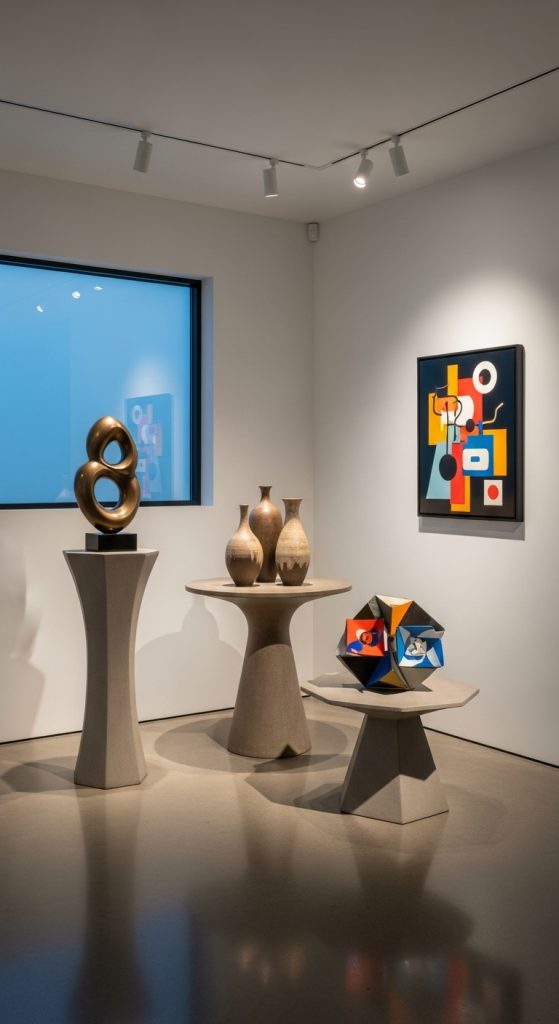
7. Gallery Ledges and Rotating Displays
Gallery ledges are shallow, sleek wall-mounted shelves designed to display framed art in layers. They allow easy rotation of artwork without the need for drilling new holes, making them ideal for collectors or design enthusiasts who enjoy change.
Preparation and Use:
Install gallery ledges approximately 12 to 18 inches apart to create multiple display levels. Choose neutral or metallic finishes to suit your space. Layer artwork by placing larger frames in the back and smaller ones in the front. Include a mix of prints, sketches, and typography for variety. Add decorative objects such as candles or vases for a curated feel. The key is balance—maintain consistency in spacing and avoid overcrowding. Rotate pieces seasonally to refresh the display. This method fits perfectly in living rooms, offices, or creative studios where you want a flexible and evolving art presentation with minimal effort.
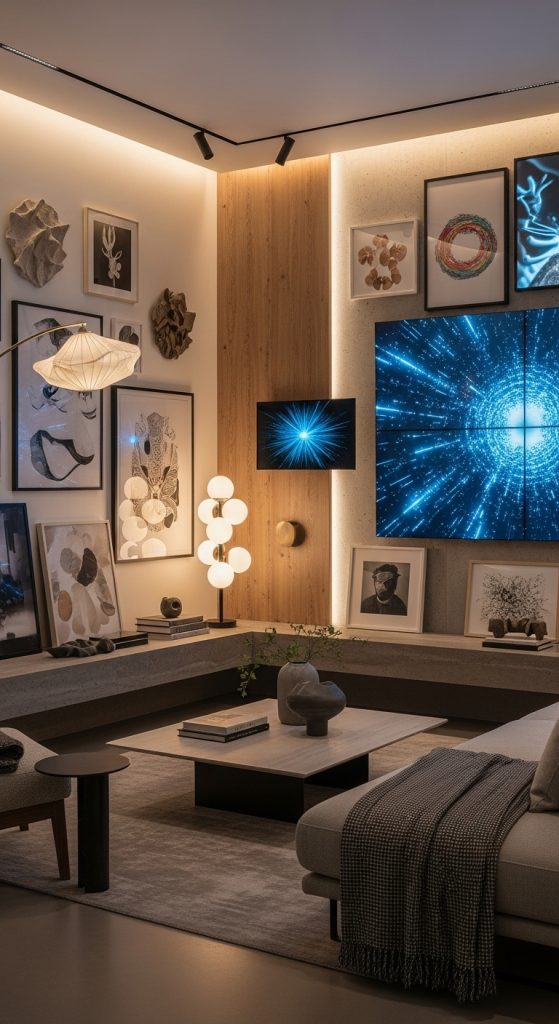
8. Mixed Media Wall Displays
Combining paintings, photography, digital prints, and sculptural pieces creates a dynamic and eclectic visual story. A mixed media wall expresses creativity and individuality, ideal for modern and artistic interiors.
Preparation and Use:
Start by choosing a unifying element—color, frame style, or subject matter—to tie diverse pieces together. Mix textures by pairing glossy prints with matte canvases or adding small 3D wall sculptures among framed works. Vary frame sizes and orientations for movement. Lay out the arrangement on the floor first to experiment with composition. Keep balance by alternating large and small pieces. Add accent lighting to highlight texture differences. Mixed media displays work best in large open walls or creative workspaces. The result is a visually rich, museum-like presentation that celebrates diversity in art while maintaining modern balance.
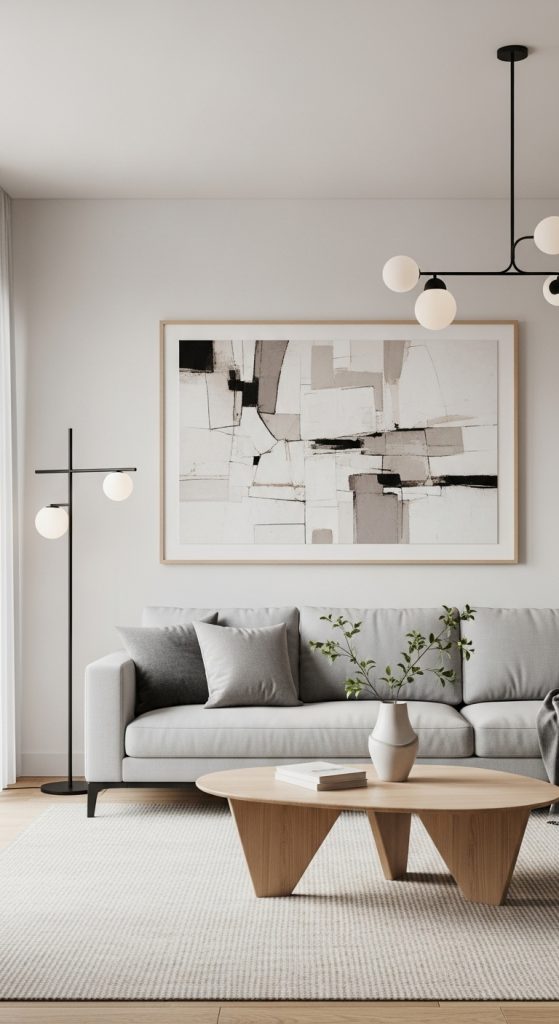
9. Minimalist Display for Open Spaces
Minimalist art displays emphasize simplicity and allow each piece to breathe within a spacious layout. Instead of crowding walls, you focus on a few significant works that define the room’s mood.
Preparation and Use:
Select artwork with clean lines, neutral colors, or abstract shapes. Use white or natural wood frames that blend seamlessly into the wall. Position the artwork at eye level with generous spacing around it to create a sense of calm and focus. Complement the display with minimal furniture and uncluttered surfaces. Lighting plays a vital role—choose soft, diffused light to highlight subtle textures without harsh shadows. This approach works well in open-concept homes, studios, or modern apartments. Minimalist displays create a feeling of serenity, ensuring each art piece stands out as a focal element while harmonizing with the overall design.
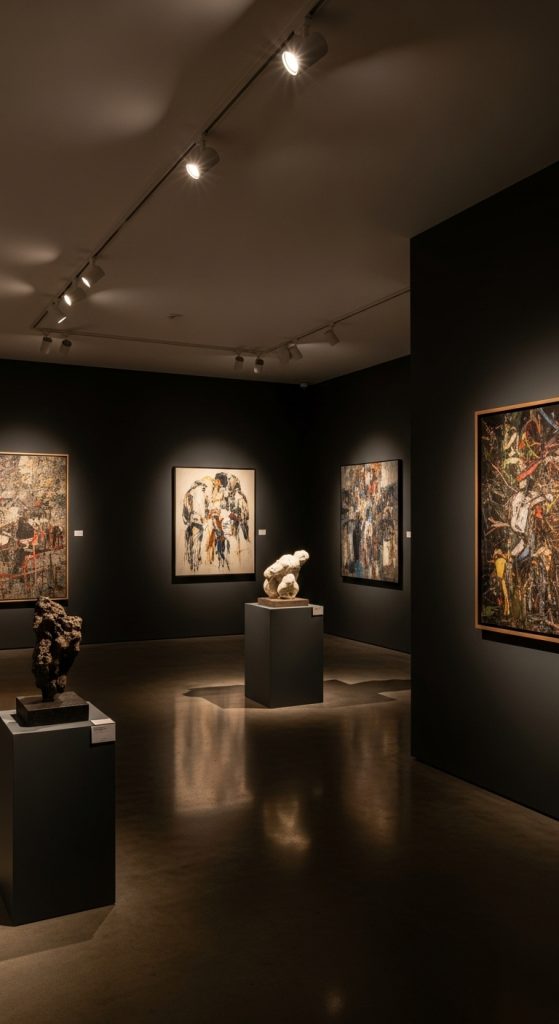
10. Digital Art and Projection Displays
With the rise of technology, digital art displays have become an innovative way to bring modern creativity into homes. High-resolution digital frames or projectors can display an ever-changing collection of artworks, adding versatility and motion to traditional decor.
Preparation and Use:
Invest in a digital frame or wall-mounted screen designed for art display. Choose high-definition, matte-finish screens that mimic real canvas. Curate a rotating playlist of digital paintings, animations, or photographs. Adjust brightness and contrast to match ambient lighting. Alternatively, use a projector to cast digital art onto a blank wall for an immersive experience. Keep surrounding decor minimal to focus attention on the moving visuals. Digital displays allow you to enjoy a diverse collection without physical storage, perfect for tech-savvy collectors or small spaces. This method merges modern technology with artistic appreciation, turning your wall into a dynamic gallery that evolves daily.
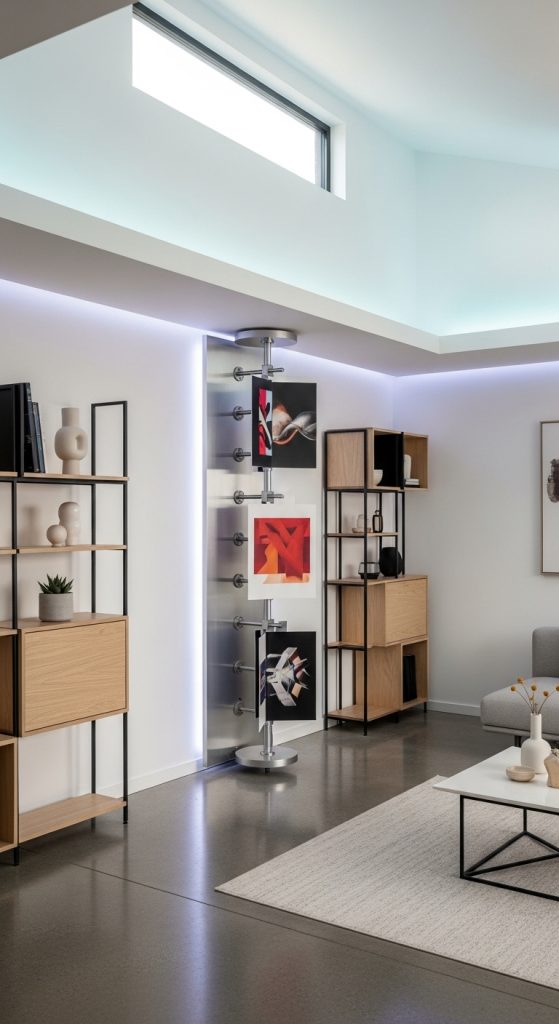
About Me

Chesung Subba
Author/Writer
Hello, I'm Chesung Subba, a passionate writer who loves sharing ideas, stories, and experiences to inspire, inform, and connect with readers through meaningful content.
Follow Me
Connect with me and be part of my social media community.
Leave a Reply